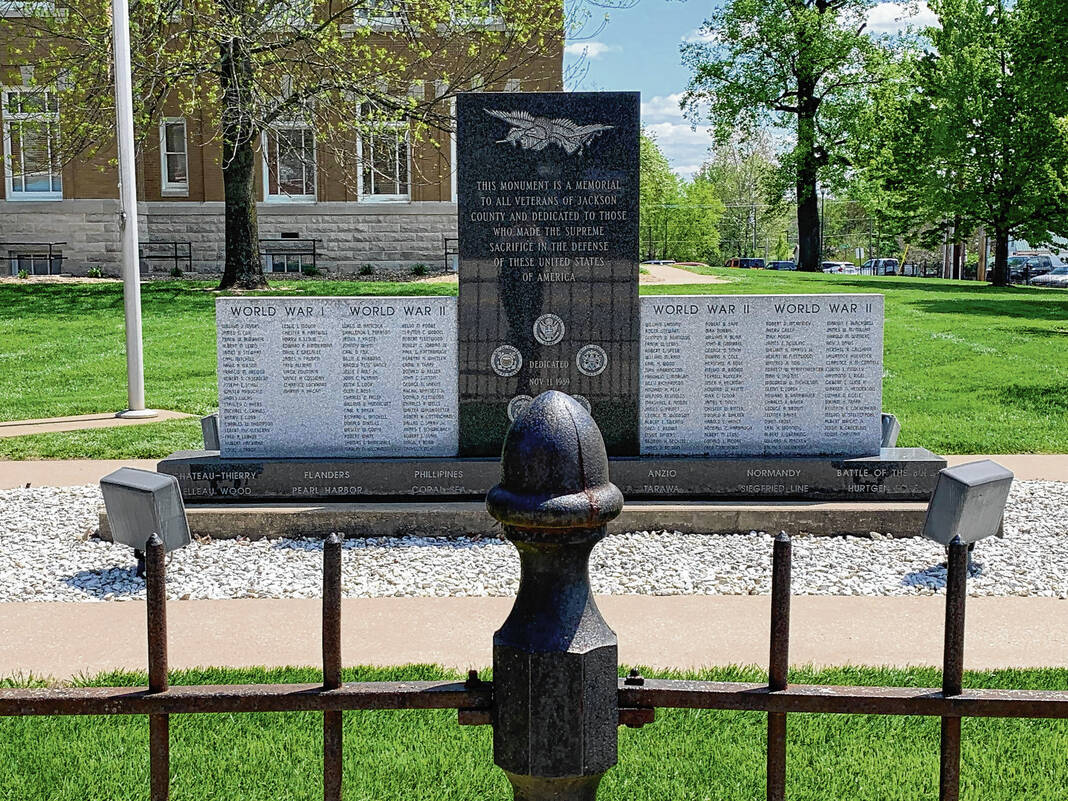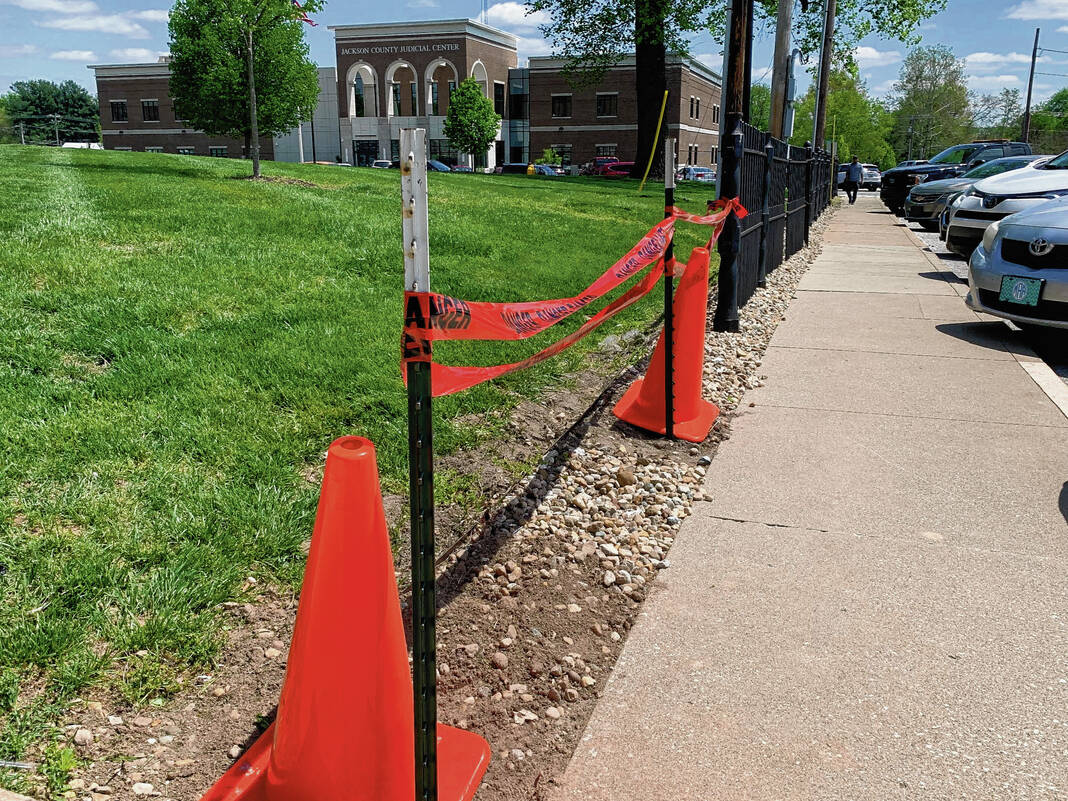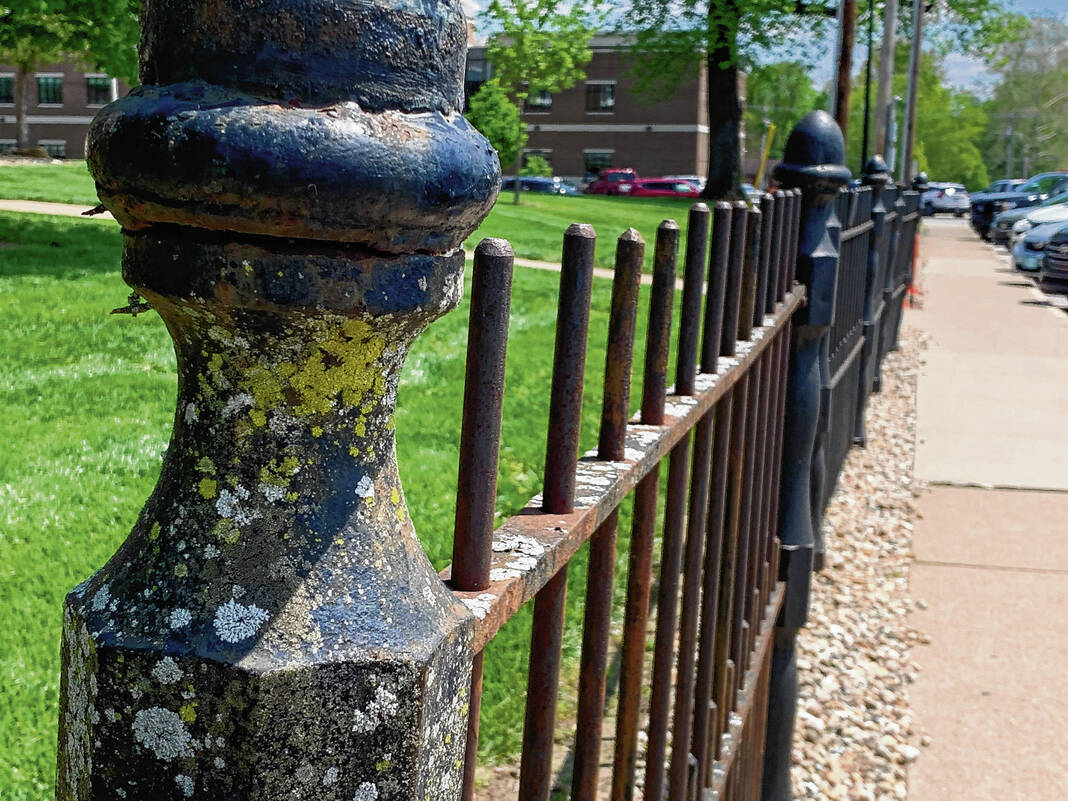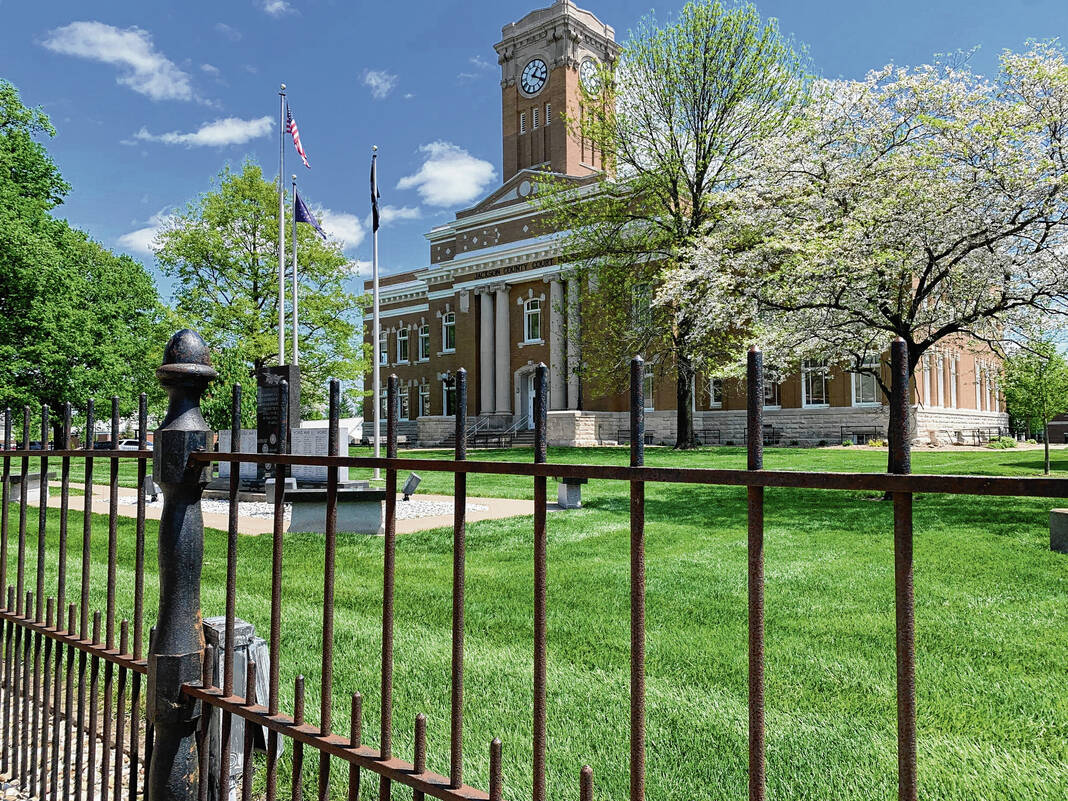BROWNSTOWN — The 151-year-old iron fence surrounding the Jackson County Courthouse has survived times of war, political change and the development of a thriving community.
Now, however, it has seen better days.
At the Jackson County Commissioners meeting April 18, discussion was held about the rehabilitation of that fencing. While the project is early in the development stages as construction quotes and various other approvals still need to be made, county Building Commissioner Conner Barnette is hopeful.
“We hope to see this project through once we get it approved and find the right quote for repair on the fencing,” he said.
The proposed project includes sandblasting and powder coating some of the existing fencing that is still in decent condition. Some recasting of posts, however, will have to be done as they have rusted through or are damaged beyond repair, Barnette said.
“They have taken a section of the fence on the southeast side of the courthouse to see what all we can do to repair the fence,” he said.
The courthouse was placed on the National Register of Historic Places in 2011.
The original Jackson County Courthouse, built in 1816, was a log-constructed building, according to Jackson County’s National Register of Historic Places registration form for the courthouse.
One of the first orders of business for the newly formed Jackson County Commissioners after the county was established on Jan. 1, 1816, was to construct a courthouse to provide services to a growing and thriving community.
It was situated on the courthouse square, a green space in the center of town, there to be known as a gathering space for the community, a source of local pride and the legal seat of government. According to the documents, courthouse squares are common features in Indiana county seats, found in 85 of the state’s 92 counties.
Edward T. Price, a courthouse square historian, said courthouse squares embody the hierarchy of a town. With it being the center of community and social life, the surrounding businesses represent the community gathering area. From there, it spreads to the residential area, which fades into the rural surroundings. All of these areas are linked together by the four broad diverging avenues that stem from the central courthouse square and spread outward.
In 1816, the building served as a courthouse and administrative offices of the county until more space was needed and a new building was constructed in 1825. As the county continued to grow, a new two-story brick courthouse was built on the square in 1834.
It served as the county courthouse until political tensions between the citizens of Brownstown and Seymour resulted in a new courthouse being constructed.
By 1869, Seymour had grown to be the largest town in the county, and residents there had made strong efforts to move the county seat to Seymour. After two failed attempts to relocate the county seat to Seymour, county commissioners were determined to build a new courthouse in Brownstown as a means of keeping it there, according to news reports from the times.
On March 10, 1870, commissioners approved letting a contract to David Bolen for the plans of a new courthouse. Travis Carter and Company of Seymour was hired and led the construction of the new building at $38,220 along with the demolition of the 1834 structure for $500. A loan of $40,000 was authorized and $26,000 in bonds were issued to cover the cost of the construction.
On June 21, 1872, commissioners approved the construction of a fence around the property to complement the courthouse. This fence still surrounds the courthouse today.
During times of war, especially World War I and World War II, the country and many industries shifted to war production. Indiana companies made efforts to mass produce steel, oil, metalworking, chemicals and electronics. These major contributions ranked the state eighth among the states in combat equipment supply, according to the Indiana Historical Bureau website.
District 1 Commissioner Drew Markel said during the county commissioners meeting that it was unique the iron fence was still present around Jackson County’s courthouse because most metal and iron fencing was melted down and used for ammunition in Indiana and other areas during the wars.
As the county continues to grow, these iron posts remain watching history continue to unfold. Commissioners hope to see the fence rehabilitated to withstand more in years to come.




